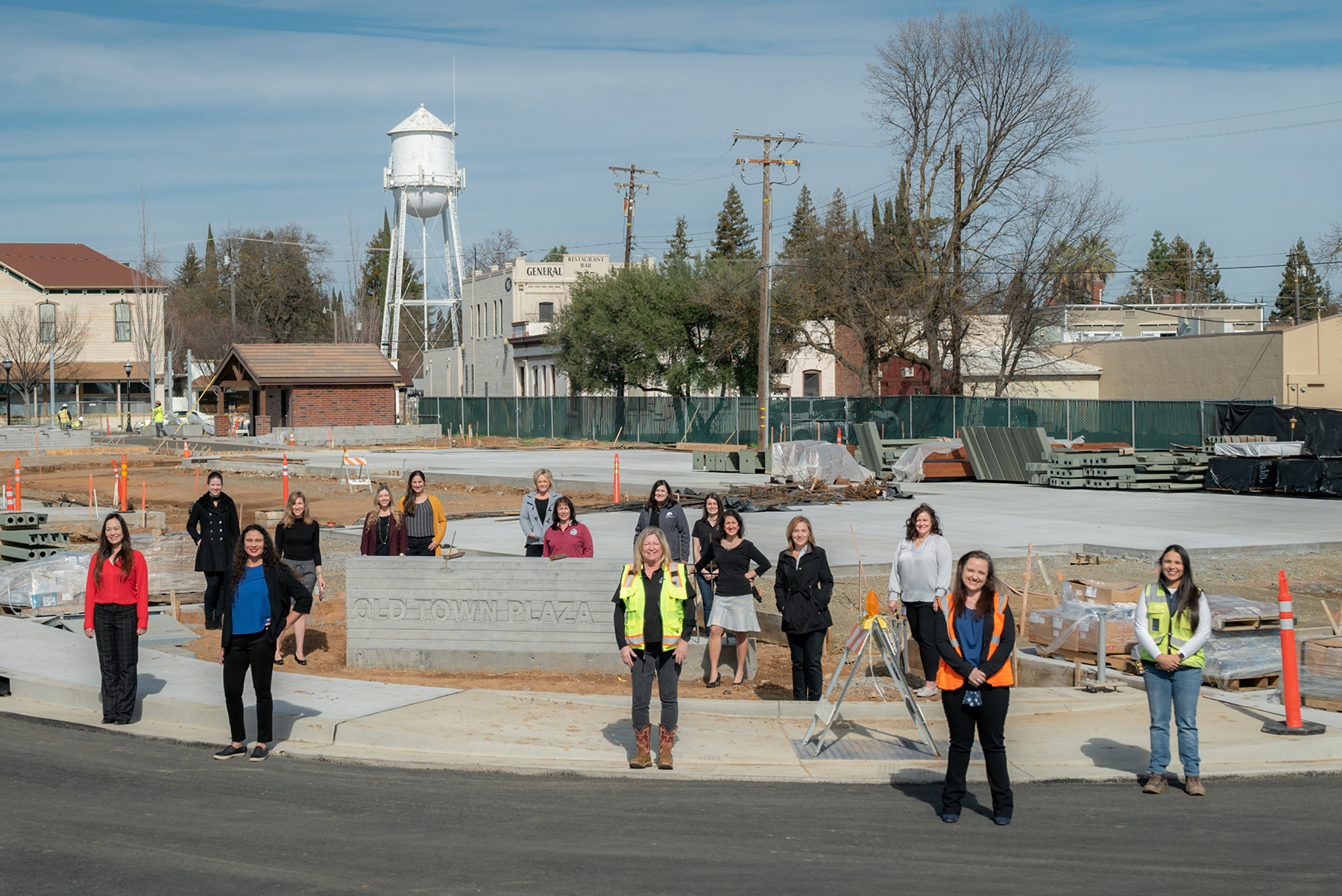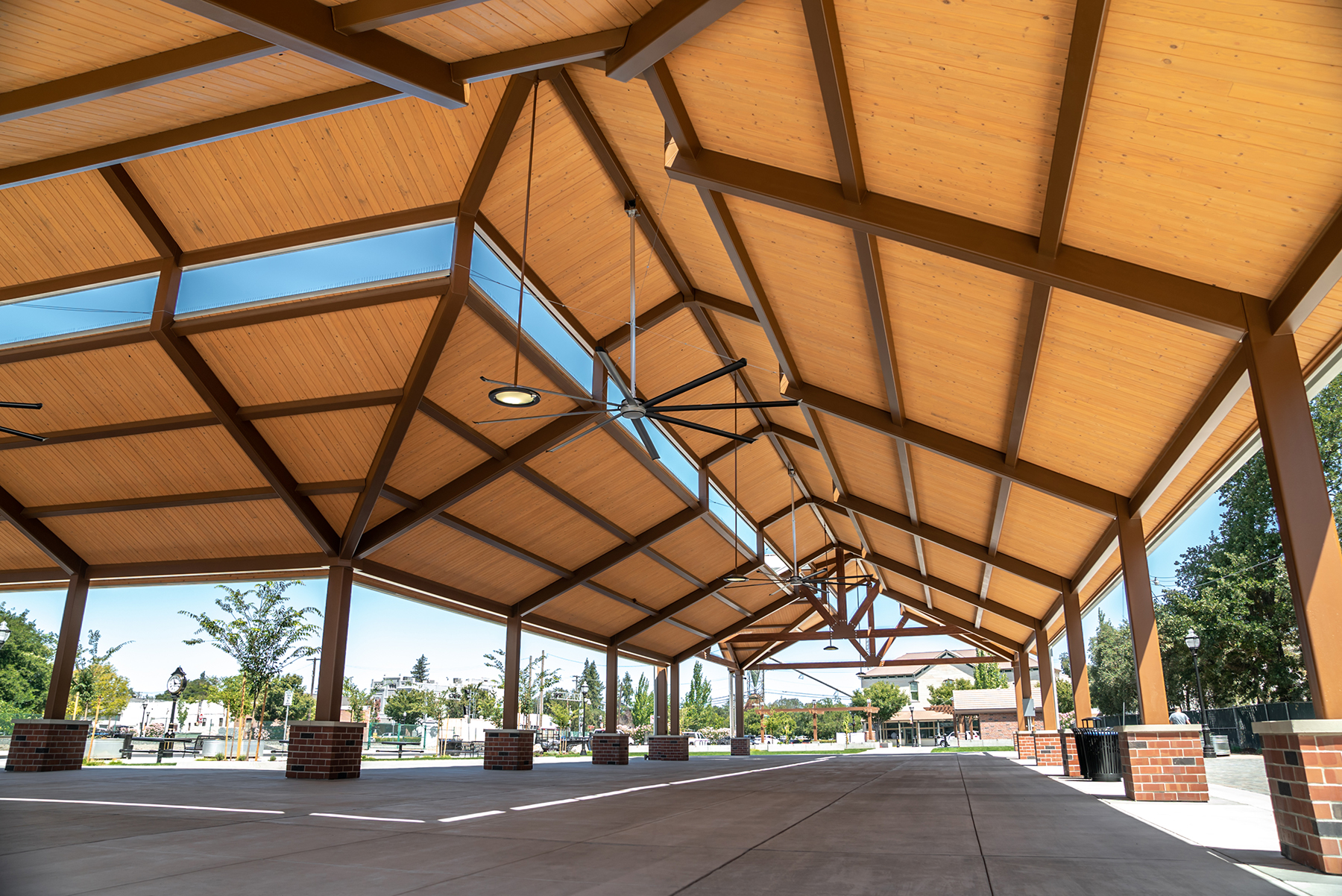
By Leslie Nemo
After a few years of deliberating, the city of Elk Grove, California, decided to turn an old quarry storage yard into the town’s first outdoor municipal center, an undertaking that transformed a relatively inaccessible portion of town into a pedestrian-friendly hangout spot.
Called Old Town Plaza, the property now holds a 9,000 sq ft open-sided pavilion. Surrounding hardscape and landscape allow people to access the center and enjoy whatever events it might host via benches and green space. The city — which sits just south of Sacramento — overhauled the roadway running alongside the plaza too, reworking the streets and paths to accommodate the various ways residents might come to Old Town and provide the utilities upcoming local businesses will need.
“The project is one of the biggest highlights of my career,” says Kristin Parsons, P.E., one the project managers for the city assigned to the renovations.
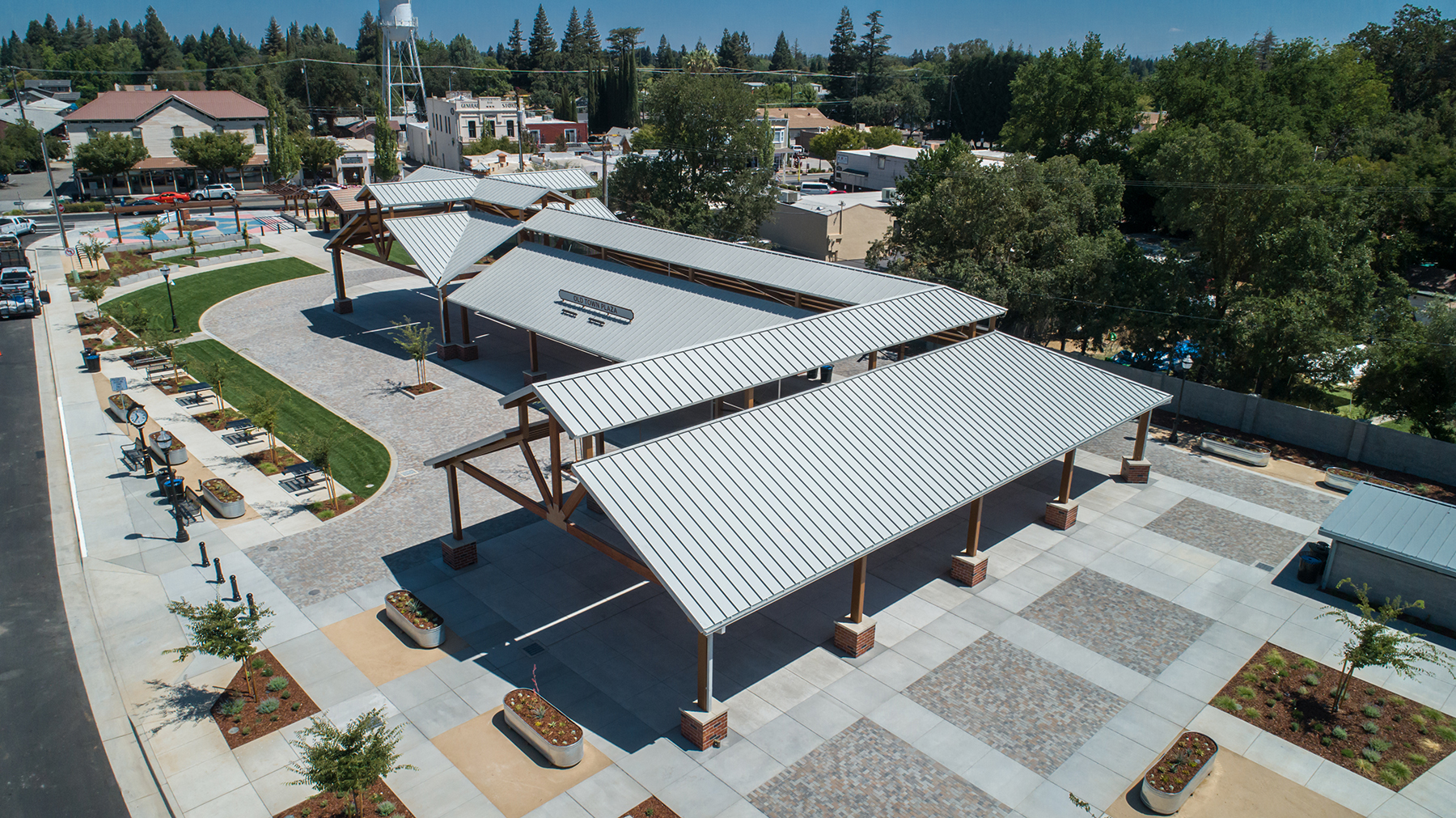
Giving old new life
When Elk Grove bought the property in 2012, the city deliberated over how it should be used. After the city paved over the former storage area, it became a default gathering space for farmers markets, car shows, and food truck meetups. Thanks to feedback during community outreach efforts in 2015, the city decided to give the de facto gathering place a more intentional design.
Elk Grove became an incorporated town in 2000, and Old Town had gotten to feel, well, old, Parsons says. The city had expanded, and newer developments attracted socializing residents. By updating the property and making it more accessible, the city hoped to create a sense of place and bring people and businesses back to the part of town that had originally blossomed into a local business center in the mid-19th century. Money from the general fund, debt proceeds, drainage fees, and some of the $1.5 billion California sets aside each year for local roadway infrastructure as part of Senate Bill 1 was approved for the $7.6 million project.
Drawing people to a new outdoor space meant providing ways for them to get there. Railroad Street, the road alongside the proposed pavilion, narrowed to a single lane in most places. Residents complained about a lack of parking in the area. The street didn’t have sidewalks, nor was there a crossroad that could have connected a nearby neighborhood to Old Town. Locals would have to walk on the asphalt to get to the plaza. “Some of them were less than two blocks away, but they didn't have adequate facilities,” Parsons says.
The city resolved to address these issues by widening the road and adding parking lots. New striping and signage would mark the road as a shared bike path, added sidewalks would allow other commuters access to the updated town center, and a drop-off loop near the plaza would allow drivers to bring passengers closer to the action before finding parking spots.
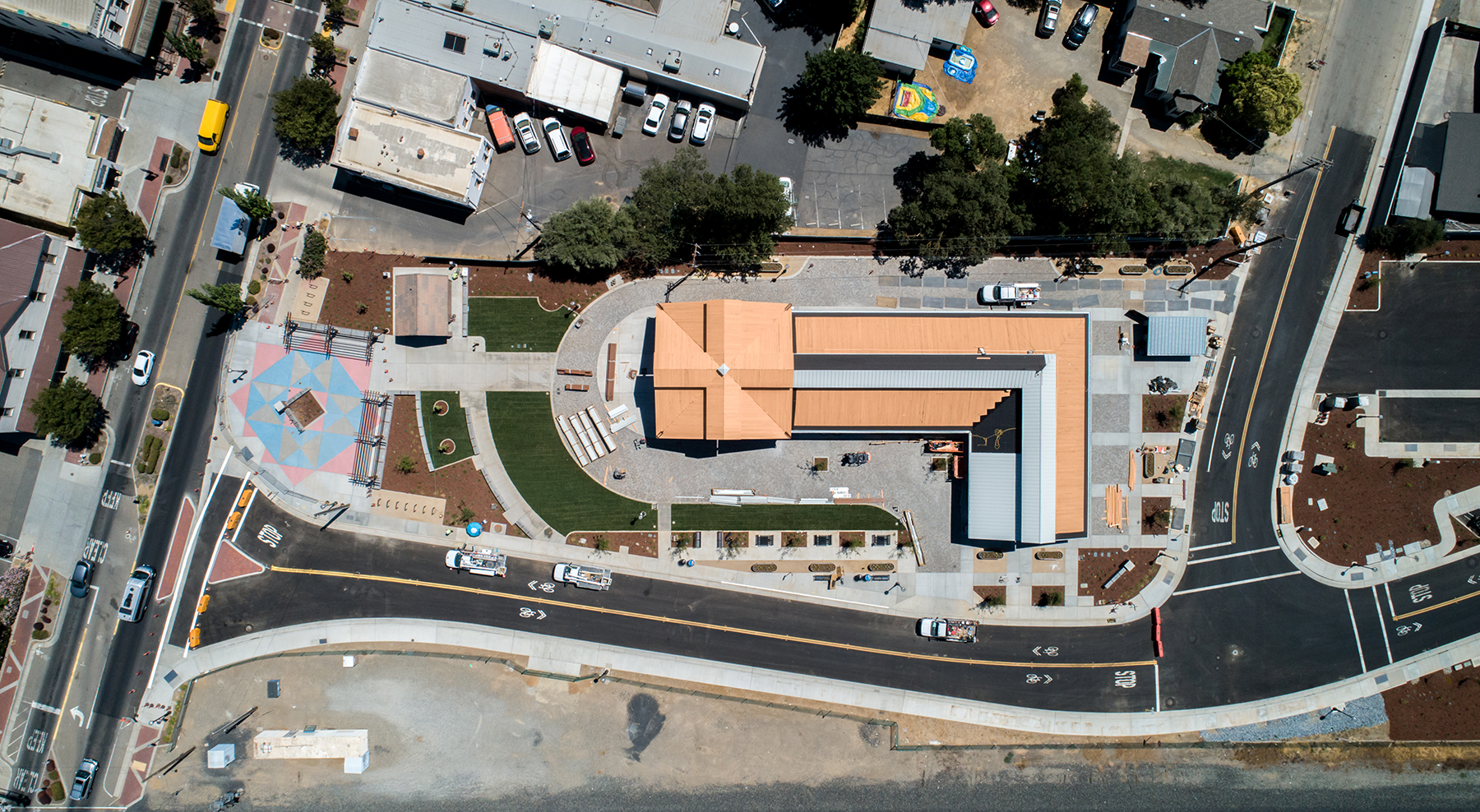
The $4.6 million for the street improvements came from the general fund, drainage fees, S.B. 1, and Measure A, a Sacramento County fund dedicated to improving transit infrastructure. A grant from the Community Development Block Grant went toward the sidewalks, ramps, and more that made the plaza more accessible to the nearby community too.
Hidden complications
While the above-ground changes to the area were drastic, the transformations hid a more complex overhaul beneath Railroad Street. As part of the revamp, the city wanted to underground the overhead utilities, and a developer who was putting commercial and residential spaces on the street needed water, sewer, and gas lines extended — services that were not available for all parcels. But the pavement already had three massive water mains running beneath it, with two of them ending in a cul-de-sac at the local water district. “That's a lot of infrastructure to go underground,” says Jacqueline Lockhart, P.E., a project manager with Dokken Engineering, one of the firms contracted to work on the street and plaza projects. “We couldn’t fit it all.”
The team solved the problem by getting an easement from the developer to run the 36 in. storm drain through the edge of his property. The land included in the easement also served as a temporary roadway while the ground was open on Railroad Street itself. The water district needed 24-hour access, so a part-time road installed after the storm drain itself ensured construction never cut off the building.
All renovations operated under a tight deadline — the city had a contract with the local developer that all work would be completed by a specific date. On the whole, the coordination between different parties was impressive, says Bruce Kamilos, P.E., the general manager for the Florin Resource Conservation District, which oversees the Elk Grove Water District. “There were issues to work through, but I thought it went well for the city,” he says.
Both the Railroad Street and Old Town Plaza improvements are largely complete. All that remains is possible artwork or the installation of a handcar to further evoke the local railway history, reminding locals of the four-wheeled, passenger-powered platforms that likely carried workers over the nearby tracks. The city is also focused on seeing how a few design choices will pan out. The smaller of the two parking lots got a cool pavement treatment, where it was covered in a lighter-colored slurry seal meant to reflect less heat. Temperature measurements are helping the city decide whether to apply similar coatings elsewhere in town. A few different trash-capture designs went into surrounding storm drains too. Hopefully, one model will stand out to the operations team and can be installed in other locations.
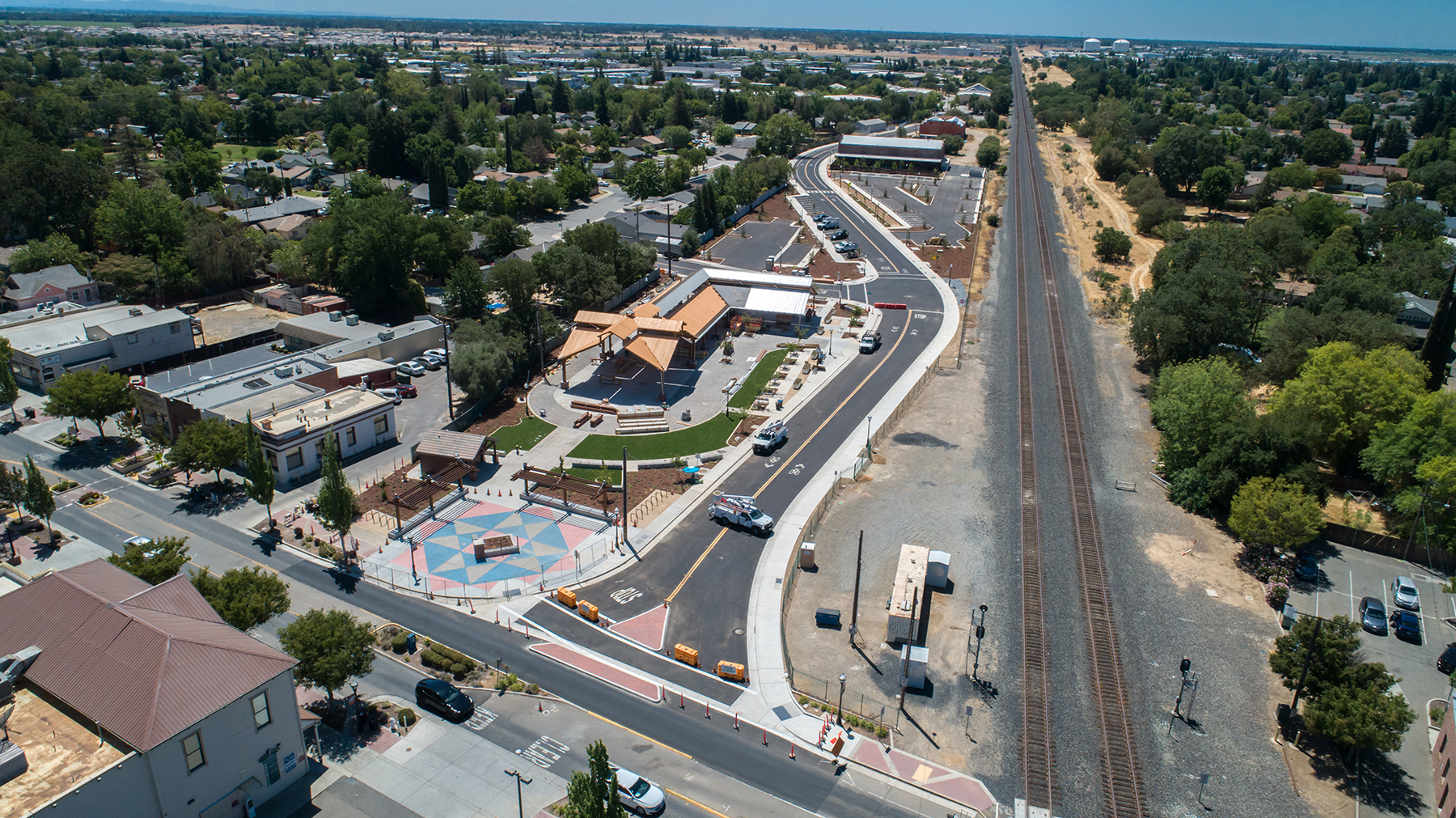
Women-led work
The Elk Grove changes were led almost entirely by women, who held roughly 20 leadership positions overseeing the Old Town Plaza and Railroad Street renovations. Parsons didn’t realize the unusual situation at first — it was her manager who pointed out that besides Parsons and Lockhart, the lead resident engineer during construction, Talina Barajas-Chen, P.E.; the city’s other project manager for the plaza site, Stephany Carlson; the contractor’s project manager, Nicole Wertz; the city attorney, Jennifer Alves; the environmental planners, Amy Bakker and Amy Dunay; the finance team, Kara Reddig, Jamie Bandy, Cecilia Long, and MeSha Perry; and the real estate lead, Ann Grava, were all female, just to name a few. “These were high-priority projects for our city council, and we were being asked to accelerate both of them,” Parsons says. “People were asked to take on certain roles because of their proven leadership abilities (not because they were women).”
Quick math by Parsons shows the odds of this many women holding leading roles on a project was 1 in 364. As only 14% of engineers in the U.S. are women, Lockhart could tell how rare the partnership was. The number of women in charge, let alone working, alongside her was a sharp departure from just over a decade ago at her former job, where she was the only female engineer in a firm with three offices.
“It wasn't something that was set out (as a goal),” Parsons says of the number of women leading the projects. “But it's a great thing to be able to share with others, and especially with young women to show them what can be accomplished.”
